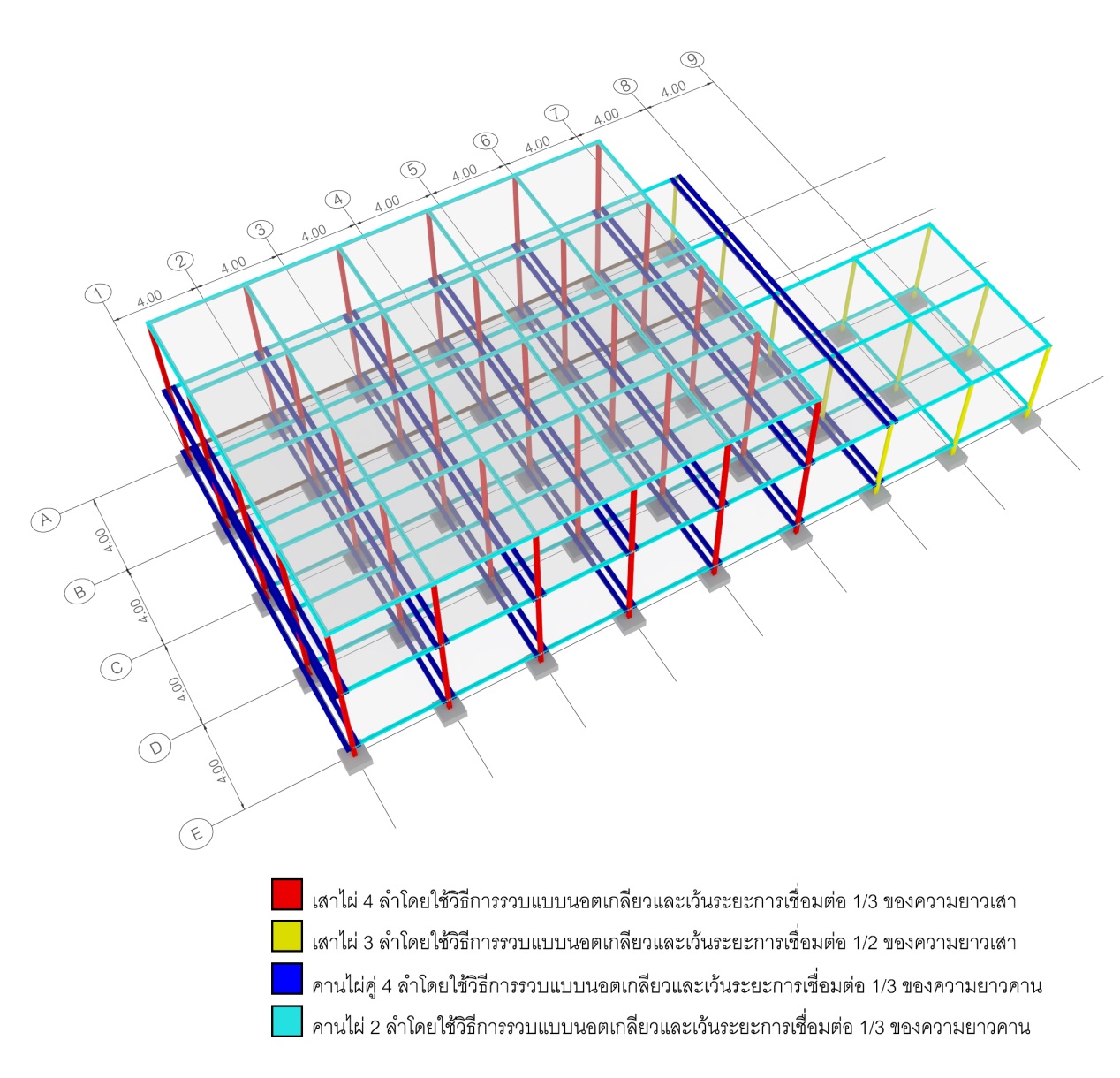The Study of Load Bearing Capacity of Bamboo Culm Bundles for The Design Applications in Small Public Building
Main Article Content
Abstract
Bamboo is a natural material which is easy to find around the world. It is beautiful, strong, and suitable for using in construction. It can grow fast; it can be used as an alternative construction material that can become friendly to the environment. In bamboo construction, we know that bamboo has the limit of each culm to the loading carrying. Therefore, in order for the structure to carry more loads, quantity of bamboo culms should be increased. Most common method is to put culms together called “bundling”. There are also many techniques to do bundles. This research is aimed to study the loading capacity of bamboo culm bundles with various bundling methods in both column and beam application. The bundles of columns and beams are very straight forward method, so it is chosen to be investigated. The research also will provides the design guideline in choosing the right amount of culms and the right bundling method to design columns and beams.
The research is the experimental research that does the finding by testing the loading capacity of setting specimens. The bamboo specie is selected to be Pai Sang Mon (Dendrocalamus Munro). The diameter is set to be the diameter of 8-10 centimeters. The variables in bundling methods are set to be 2 types. They are bamboo dowels with nylon rope and nuts and bolts. The amount of bamboo columns used in bundling in order to test the load carrying capacity is one to four culms. The method is to find load carrying capacity of bamboos by using ISO-22157 standards (Determination of physical and mechanical properties of bamboo). The load carrying capacity of bamboo columns and beams result appears to be highly increased if the amount of bamboo column increases. The load carrying from the bundling method with nuts and bolts appears to be higher than the bundling method with be bamboo dowels with nylon rope. The result of experimental research testing then are put to do modeling program, SAP2000 Educational Version. It is a tool to design and calculate the structural to finding sizing cross sectional, long culm and small public building.
Downloads
Article Details

This work is licensed under a Creative Commons Attribution-NonCommercial-NoDerivatives 4.0 International License.
All material is licensed under the terms of the Creative Commons Attribution 4.0 International (CC-BY-NC-ND 4.0) License, unless otherwise stated. As such, authors are free to share, copy, and redistribute the material in any medium or format. The authors must give appropriate credit, provide a link to the license, and indicate if changes were made. The authors may do so in any reasonable manner, but not in any way that suggests the licensor endorses you or your use. The authors may not use the material for commercial purposes. If the authors remix, transform, or build upon the material, they may not distribute the modified material, unless permission is obtained from JARS. Final, accepted versions of the paper may be posted on third party repositories, provided appropriate acknowledgement to the original source is clearly noted.
References
Anusiri, M. (2002). การออกแบบโครงสร้างไม้และเหล็ก [Structural timber and steel design] (8th ed.). Bangkok: SE-ED Public Company Limited.
Chovichien, V. (2002). การออกแบบโครงสร้างไม้ [Structural timber design] (8th ed.). Bangkok: POR.SAMPHAN Printing.
Chung, K. F. & Yu, W. K. (2002). Mechanical properties of structural bamboo for bamboo scaffoldings. Journal of Engineering, 6(4), 275-281.
Computer & Structures INC. (2011). Introductory tutorial for SAP2000 linear and nonlinear static and dynamic analysis and design of three-dimensional structures. California: University Avenue Berkeley. Fan, H. & Fan, C. (n.d). Test method for determination of mechanical properties of bamboo. Harbin: Civil Engineering and Architecture Harbin University.
International Organization for Standardization [ISO]. (2004). Bamboo-determination of physical and mechanical properties. ISO 22157-1: 2004(E)., Switzerland: Author.
Khongyon, A. (2011). พฤติกรรมการรับแรงดัดของลำไม้ไผ่ตง [Bending behavior of Pai Tong (Dendrocalamus asper backer) bamboo culms]. Master of Engineering Thesis, Faculty of Engineering, Kasetsart University, Bangkok, Thailand.
Malanit, P. (2009). The suitability of dendrocalamus asper basker for oriented strand lumber. Doctor of Philosophy’s Thesis, University of Hamburg, Hamburg.
Nienhuys, S. (2012). Thin bamboo culms for trusses-use of two and three culms in composite beams. Retrieved November 17, 2012, from http://www.nienhuys.info
Prasertsuk, S. (2015). การจัดองค์ประกอบเพื่อการใช้สอยและการเชื่อมต่อที่ว่างในสถาปัตยกรรมไทยสมัยใหม่ [Architectural composition for utilities and spatial connection in modern Thai architecture]. Journal of Archi tecture/Planning Research and Studies, 12(1), 38.
Prasongpornsakul, P. (2011). การศึกษาพฤติกรรมและกำลังรับน้ำหนักตามแนวแกนของเสาไม้ไผ่ [Behavior and load carrying capacity of bamboo columns]. Master of Engineering Thesis, Faculty of Engineering, Kasetsart University, Bangkok, Thailand.


